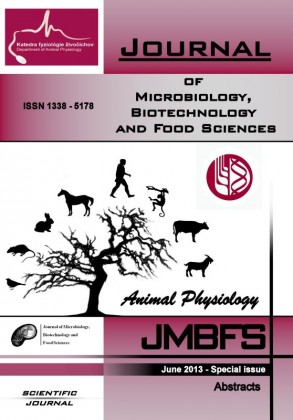PULMONARY ARTERIAL HYPERTENSION IN ISOLATED PORTAL VEIN DISEASE MAY DIFFER FROM OTHER FORMS OF PORTOPULMONARY HYPERTENSION
Keywords:
Pulmonary arterial hypertension, portal vein disease, portopulmonary hypertensionAbstract
Portopulmonary hypertension (POPH) is associated with a poor prognosis in comparison to some other types of pulmonary arterial hypertension (PAH). Due to various causes of portal hypertension, the subgroup of POPH can be heterogeneous and PAH is considered to be related more closely to portal hypertension than to an intrinsic hepatic disorder.We report a retrospective series of 4 consecutive patients with severe POPH due to pre-hepatic portal hypertension and no signs of liver function impairment. All of them were non-responders to acute vasoreactivity testing and were treated with specific treatment.
Patient 1 (male) was diagnosed with PAH at the age of 4. At the age of 31, his status deteriorated, dysphonia and abdominal dyscomfort appeared and his PAH was linked to newly diagnosed portal vein atresia. Sildenafil treatment was initiated. After 6 years of treatment, the patient is asymptomatic. Patient 2 (female) was diagnosed with PAH associated with portal vein agenesis at the age of 27. At the age of 30, symptoms worsened and peripheral edema developed. Ambrisentan treatment was initiated. After 4 years of specific treatment, the patient is asymptomatic. Patient 3 (male) was diagnosed with PAH associated with post-traumatic portal vein thrombosis at the age of 49 and bosentan was introduced. After 6 yrs of treatment, the patient’s status remains stable, he is mildly symptomatic. Patient 4 (female) was diagnosed with PAH associated with spontaneous portal vein thrombosis due to hypercoagulable state at the age of 48. Sildenafil treatment was started and her status improved. 2 yrs after treatment initiation, her condition deteriorated (WHO FC III, 6-min walking distance 200 m), and ambrisentan was added. After another 2 yrs of combination treatment, her status remains improved in WHO class II. In all cases, no major adverse effects of specific treatment have been reported. Main patient characteristics are summarized in Table 1.
Specific treatment in this small case series of pts with POPH due isolated portal vein disease uniformly resulted in an improvement of clinical status, markers of prognosis, and long term survival. This supports the opinion that POPH is a heterogeneous clinical condition with POPH due to pre-hepatic portal hypertension possibly being a distinct entity. Specific treatment including ERA antagonist seems to be warranted and these patients should not be excluded from randomized clinical trials.
Downloads
Download data is not yet available.
Downloads
Published
2013-06-06
How to Cite
TavaÄová, M., Luknár, M., Å imková, I., Lesný, P., & Goncalvesová, E. (2013). PULMONARY ARTERIAL HYPERTENSION IN ISOLATED PORTAL VEIN DISEASE MAY DIFFER FROM OTHER FORMS OF PORTOPULMONARY HYPERTENSION. Journal of Microbiology, Biotechnology and Food Sciences, 2(Abstracts special issue), 10–11. Retrieved from https://office2.jmbfs.org/index.php/JMBFS/article/view/7532
Issue
Section
Biotechnology
License
Copyright (c) 2013 Marcela TavaÄová, Milan Luknár, Iveta Å imková, Peter Lesný, Eva Goncalvesová

This work is licensed under a Creative Commons Attribution 4.0 International License.
All papers published in the Journal of Microbiology, Biotechnology and Food Sciences are published under a CC-BY licence (CC-BY 4.0). Published materials can be shared (copy and redistribute the material in any medium or format) and adapted (remix, transform, and build upon the material for any purpose, even commercially) with specifying the author(s).

